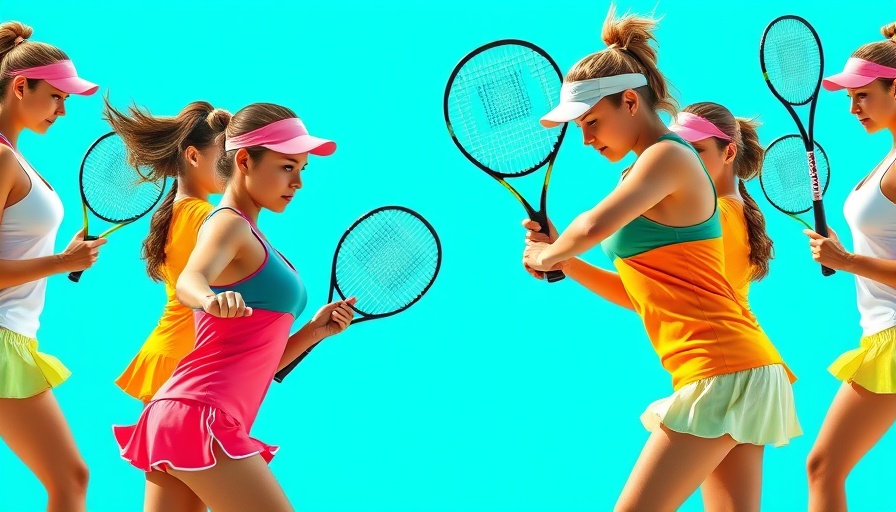
The Power of Upper Body Rotation in Sports
In today’s competitive sports landscape, the importance of technique can’t be overstated. One technique that often goes underappreciated is upper body rotation, particularly for athletes like tennis players, golfers, and pickleball enthusiasts. The recent video on How to Increase Your Upper Body Rotation illustrates a practical approach to enhancing this crucial aspect of athletic performance. By focusing on upper body mechanics, athletes can elevate their shots—whether it’s smashing a forehand in tennis or slicing during a golf swing.
In How to Increase Your Upper Body Rotation, we delve into the significance of upper body mechanics, sparking a deeper analysis on how it can enhance athletic performance.
A Key Insight from the Video
The video showcases Julie, a player looking to improve her forehand shot through enhanced upper body rotation. While she initially demonstrates good form, the coach emphasizes the necessity to complete her rotation fully, allowing her right shoulder to move forward and her left shoulder to retreat. This adjustment transforms her forehand into a more powerful strike, as shown by her ability to hit harder with the same effort. This simple yet effective cue highlights how minor adjustments in technique can lead to significant gains in performance.
Understanding the Mechanics of Rotation
Upper body rotation is not merely a physical adjustment but also a biomechanical necessity. When players rotate their shoulders correctly, they generate greater torque, ultimately increasing shot velocity. The philosophy here can be extended beyond just tennis; in golf, an efficient upper body rotation can improve driving distance while in pickleball, it enhances play from the baseline.
Future Insights: Where Technique Meets Technology
As technology continues to evolve in the sports arena, the potential for analysis tools that help break down and improve upper body rotation is limitless. With wearable tech that tracks biomechanics and sophisticated software that analyzes swing patterns, athletes will increasingly find tailored solutions that amplify their performance while minimizing the risk of injury.
Common Misconceptions: Addressing the Myths of Technique
Many players believe that raw power alone can elevate their game. However, the reality is that finesse and form hold equal weight. By illustrating a common misbelief that arm strength is the primary driver of power, players can become aware of the importance of cultivating their upper body mechanics. Just as Julie learned in her session, relying too heavily on arm strength can lead to inefficient, weaker shots.
Practical Tips for Athletes
For those looking to improve their upper body rotation, consider these pragmatic tips:
- Master Your Stance: Ensure that your feet are properly aligned, as a stable base is critical for effective rotation.
- Engage Your Core: Your core plays a pivotal role in facilitating upper body movement. The more you activate your core, the smoother your rotation will be.
- Practice Gradually: Focus on breaking down your swing or stroke into segments, practicing each component of upper body rotation before combining them.
Making Sense of the Connection
These insights lead us back to the practical applications presented in the video. Incorporating them into one’s routine not only benefits the physical mechanics of the sport but also fosters a deeper understanding of one’s body in motion. Many often overlook the role of technique amidst the drive for speed and power, but embracing a holistic training philosophy can be transformative.
As you reflect on your performance, whether on the tennis court, the golf green, or the pickleball court, consider how upper body rotation can play a role in efficacious play. Adjust your technique today and observe the difference in your performance!
 Add Row
Add Row  Add
Add 




Write A Comment